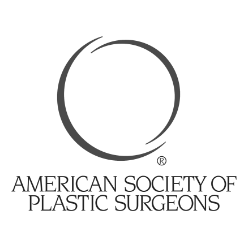Reasons for Breast Implant Removal in the San Francisco Bay Area
Few women consider the eventual need for a revision procedure when they choose breast augmentation. However, this is a common surgery and, for some women, a necessary one to correct implant-related complications or alleviate potentially severe systemic symptoms.
Whether you are struggling with health concerns or your implants no longer match your aesthetic ideals, breast implant removal can get you back on the right path.
Our board-certified plastic surgeon, Dr. Tancredi D’Amore, performs breast implant removal for patients in the San Francisco Bay Area. If you are experiencing symptoms or no longer want your implants, contact his office at 415-927-7660.
Why Women Choose to Remove Their Breast Implants
Women decide to remove their implants for both physical and cosmetic reasons. The factors below will help determine the techniques used during implant removal and enhancement options following removal.
Breast Implant Illness (BII)
While there is still uncertainty around breast implant illness (BII) in the general plastic surgery community, surgeons agree that the removal of the implants in the majority of cases has a favorable impact on the systemic symptoms.
Some of the symptoms, as reported by the FDA, include:
- Chronic fatigue
- Brain fog
- Anxiety
- Depression
- Joint and muscle pain
- Hair loss
- Dry skin
- Rashes
- Inflammation
- Weight fluctuations
- Autoimmune symptoms
Many of Dr. D’Amore’s patients who experience systemic problems have previously been told that these symptoms are all in their heads or due to other factors. While there is still no proof as to why breast implant illness occurs in some women but not others, there are several studies examining the BII patient experience.
Capsular Contracture
Capsular contracture is a fairly common implant complication that occurs when the scar tissue that develops around the implant becomes thicker, smaller and begins to squeeze the implant. The implant then feels harder and is moved upward.
While this can be addressed with a capsulectomy, it can recur if an implant is replaced. Therefore, it is common for some patients to undergo several surgeries to treat this condition. Many of these women ultimately decide to remove their implants permanently.
Implant Rupture
All implants (whether saline or silicone) are susceptible to rupture as the silicone shells can weaken and tear.
While the inner contents of a saline implant will be absorbed by the body, the inner contents of a silicone implant will not and will need to be removed surgically.
Implant Displacement
While implants are placed into a created breast pocket, they can shift out of position. Several types of implant displacement are possible, including:
- Bottoming out: Occurs when the implants stretch the skin and fall past the lower pole of the breast
- Double bubble deformity: Occurs when the implant falls partially below the inframammary crease, creating the look of a double breast
- Symmastia: Occurs when the skin and muscle between the breast detaches from the breastbone, making a single breast pocket
BIA-ALCL and Other Malignancies
While rare, breast implants and the scar tissue capsules surrounding them have been linked to various malignancies, including BIA-ALCL and BIA-SCC.
- Breast implant-associated anaplastic large-cell lymphoma (BIA-ALCL) is a type of T-cell lymphoma that develops in the scar tissue surrounding implants — not the breast tissue itself. This is often treatable when diagnosed early. BIA-ALCL can spread if it is not treated.
- Breast implant-associated squamous cell carcinoma (BIA-SCC) is a rare but aggressive epithelial-based tumor that stems from the scar tissue capsule. This is also not in the breast tissue.
In addition to the above, recent studies published in JAMA Network Open have shown that women who have used textured implants as part of a reconstructive procedure (following cancer treatment) may have a higher chance of developing ALCL.
Unhappiness With Your Breast Implants
All women go through life in different stages and see their body contours shift and morph through time. It is very common for women to desire large augmented breasts in their 20s only to realize that they no longer want them in their 30s or 40s after they’ve had children or undergone weight fluctuations.
Additionally, some women decide that they no longer want foreign materials in their body, regardless of whether or not they are experiencing systemic symptoms, and choose to remove them to align themselves with their beliefs.
Do You Want to Remove Your Implants in the San Francisco Bay Area?
If you are considering breast implant removal, contact Dr. Tancredi D’Amore and his expert team. Schedule a consultation today to discuss your options and learn how this procedure can benefit you. Call us today at 415-927-7660 or fill out our online contact form.


